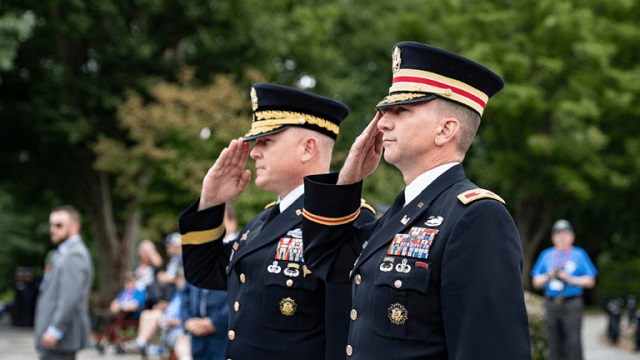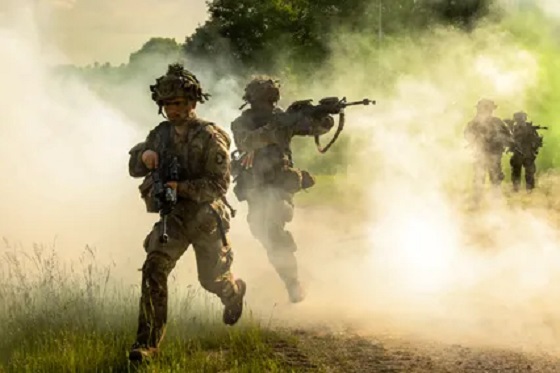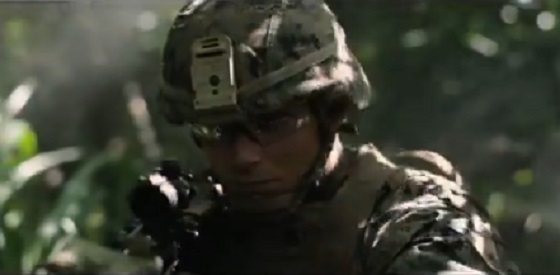armed forces
If you care about Canada’s security, 2023 was a year of substantial disappointment

From the MacDonald Laurier Institute
And it’s unlikely to get any better in 2024
As the calendar turns over to 2024, I’ve been reflecting on the year that was in Canadian security and defence. It started off with great promise. There was the potential for a new defence policy update that would address many of the government’s shortcomings with respect to defence policy and the military capabilities of the armed forces, and there was the potential for the procurement of the P-8 alongside a number of other capabilities.
Furthermore, there was hope for progress in dealing with substantiative issues around culture change and recruitment/retention. After General Eyre’s directive on reconstitution in October 2022, there was good evidence to suggest that the political leadership understood the poor material shape the Canadian Armed Forces were in and would become more discriminating as to what missions it was sent on. Relatedly the government as a whole seemed to better understand the national security environment it found itself in, especially after the publication of the Indo-Pacific Strategy in November of 2022.
Yet the close of 2023 highlights just how much this was a year of substantial disappointment for those who care about Canada’s military, defence capabilities, and its place in the world.
Rather than the beginnings of a renewal, the CAF is in a worse state and facing an even deeper hole it needs to dig out of. The delay of the defence policy update, reportedly due to its cost, as well as the shuffling out of Anita Anand, a popular minister within the department, tore out the tender shoots of hope many military members had nurtured for the military’s revival. The announced budget cutbacks of approximately $1 billion dollars over the next three years further put this to bed.
While there were some funding announcements, such as the P-8 and the Remotely Piloted Air System program, they are being layered onto a military that has haemorrhaged much of its key personnel. Many individuals, who are already overtasked, rightly wonder who will be there to integrate, operate, or sustain these new capabilities.
None of this even acknowledges the increased threat environment or the massive technological change that is affecting a CAF that desperately requires modernization. While National Defence has outlined several efforts to address this challenge, such as the pan-domain strategy, its requirement to simply survive on an austere budget means there are no resources or intellectual capacity left to implement them.
Looking back at the past year, I have been searching for historical precedents to compare it to. One has come to mind a few times: 2003.
Similar to the present, the country was faced with a number of serious security challenges: 9/11, Afghanistan, and the debate over the impending Iraq war. The 2003 CAF faced serious material and manpower challenges—what General Rick Hillier would later describe as the “decade of darkness” of the 1990s. In 2003 the military faced multiple crises simultaneously: a rust-out crisis of aging military equipment, a personnel crisis, and multiple open-ended missions. As one influential study, titled “Canada Without Armed Forces” published in 2003 suggested:
The next government will be caught up in a cascading policy entanglement initiated by the rapid collapse of Canadian Forces core assets and core capabilities. This problem will inevitably disarm foreign policy as Canada repeatedly backs away from international commitments because it lacks adequate military forces. In these circumstances, new policy initiatives aimed at ‘being useful to the United States in our own interests’ may well be derailed.
Sound familiar? While some of the direst of predictions did not immediately emerge, they were only delayed. The military received substantial investments, but a large portion of it was tied to funding the operations in Afghanistan or helping build a military that would continue similar operations. Modernization was delayed on capabilities that would help defend Canada and its allies from great power conflict, and in some cases entire capability sets were retired with no replacement forthcoming.
Looking back at the past year, one way to look at my columns is that they are chronicling the consequences of the inadequate modernization of the Canadian Armed Forces since 2003. It is a likely outcome that by 2028, the country will likely have a navy and air force that are effectively unable to provide a basic level of defence in key areas, and an army that will be unable to assist our allies with previously announced commitments.
But this does not explain why we’ve arrived at this moment. Over the years, many observers of Canadian foreign and defence policy have noted that the fundamental “problem” of the country’s national defence is that there are no “pressing” threats to its security. I’ve personally had difficulties with this perspective, as it lazily excuses present-day inaction. It ignores (or, perhaps more accurately, confirms) the perspective that it is not actually to do with the threats themselves, but Canadians’ perception of them. One book, also published in 2003, diagnosed this problem well: Andrew Cohen’s While Canada Slept. It is still worth reading today.
From 1945 to 1968, successive Canadian governments from Louis St. Laurent to Lester B. Pearson viewed international security as a critical focus. Many had fought or been a direct participant in one or both World Wars and saw the ruinous cost of inaction and unpreparedness. They had built close relationships with senior officials of all of Canada’s major allies, which allowed them to tackle problems in lock-step with each other. Canada was present at the creation of the key institutes that have provided for our economic prosperity and security. Cohen’s book lamented the decline of Canada’s principal foreign policy instruments due to neglect that occurred even as Canadians agreed that being a good international partner was in the country’s national interest.
That really hasn’t improved over the subsequent twenty years. Rather, the reality is grimmer. Like in 2003, the international system has changed radically, this time with Russia and China actively undermining the rules-based order. In the 2000s, both Paul Martin (and later Stephen Harper) understood the poor material state of the CAF and made efforts to address it. Unlike then, however, the government of today has been extremely slow to acknowledge this reality, and in some cases ignores it for their own political interests.
This has given me the most pause over the past year. Rather than acknowledge or address the real possibility of capability collapse or the broader international challenges, the political leadership has chosen to obfuscate these issues and continue policies that have already contributed to the state it currently is in. There is a preference for big, showy announcements while ignoring the much more desperately needed substantial action to fix the armed forces and foreign policy writ large.
Just this week the minister of national defence announced the deployment nine helicopters to Latvia followed by sending a handful of personnel to support the multinational effort to provide security in the Red Sea. These are token contributions that are unsustainable in aggregate for the military, yet they serve the political purpose of showing Canada doing “something.” Domestic priorities, no matter how small, will trump international ones for this government.
This was evident last July at the NATO meeting in Latvia, which was focused on the threat posed by Russia and the war in Ukraine. Rather than focus on the topic at hand, Prime Minister Trudeau took to lecturing the assembled leaders on the threat posed by climate change, which was not well received by the gathering. Even in non-defence areas, such as with foreign interference, similar preferences are visible. The continual delay in establishing an inquiry while trying to control its scope is an example of putting parochial interests over that of the country writ large.
Considering the hope that the year started with and how it ended, it’s unlikely that much will change in 2024. Even a cursory look at the political interests of the Liberal and NDP parties (joined by their supply and confidence agreement) suggests that it is unlikely that the government will accelerate their spending on defence—rather they are more likely introduce more delays. Yet the military and other instruments of the country’s foreign and security policy will not be able to wait. Their failings need to be addressed now, or we will collectively suffer its consequences.
Richard Shimooka is a Hub contributing writer and a senior fellow at the Macdonald-Laurier Institute who writes on defence policy.
armed forces
Trump rebuilds the ranks: Army crushes 2025 recruitment goal early

 MxM News
MxM News
Quick Hit:
The Army has already exceeded its 2025 recruiting goal of 61,000 troops—four months ahead of schedule—as the Trump administration’s rollback of woke policies draws thousands back to military service.
Key Details:
-
The Army’s 2025 recruiting goal was 61,000—higher than last year’s 55,000—and has already been met with more than four months remaining in the fiscal year. Officials report a 56% increase in average daily enlistment rates over last year.
-
Army Secretary Daniel Driscoll thanked Trump and Hegseth, saying their “decisive leadership” and “putting soldiers first” contributed to the record-breaking numbers.
-
Hegseth has aggressively pushed to eliminate leftist cultural initiatives in the military, including moves to administratively separate transgender troops and rename a Navy ship previously dedicated to gay rights icon Harvey Milk.
Diving Deeper:
The U.S. Army has reached a major milestone ahead of schedule—signing up 61,000 new recruits in fiscal year 2025, effectively smashing its annual goal months before the September 30th deadline. The achievement marks a dramatic shift after years of underperformance and is being touted as a vindication of the Trump administration’s efforts to reorient the military away from progressive social engineering and back toward warfighting readiness.
In a Wall Street Journal op-ed Tuesday, Army Secretary Daniel Driscoll praised the recruiting corps, attributing their success to both boots-on-the-ground determination and high-level support. “I’m incredibly proud of our U.S. Army recruiters and drill sergeants,” he said. “Their colossal efforts and dedication to duty helped the U.S. Army accomplish our FY25 annual recruiting goal a full four months ahead of schedule.” Driscoll continued, “I want to thank the commander in chief, President Trump, and Secretary of Defense Hegseth for their decisive leadership and support.”
The Army’s target of 61,000 recruits was a notable jump from last year’s 55,000 goal. Officials say that as of this month, daily enlistment figures are tracking 56% higher than the previous year.
Driving the increase, many believe, is the sweeping overhaul of military culture underway under Defense Secretary Pete Hegseth. Hegseth has made no secret of his intent to steer the armed forces away from what he calls “woke and weak” policies. That includes the Pentagon’s past focus on gender identity politics, climate initiatives, and mandatory diversity training—priorities Hegseth sees as incompatible with combat readiness.
“We are leaving wokeness and weakness behind,” Hegseth declared during remarks last month at the Special Operations Forces Week convention in Tampa. “No more pronouns, no more climate change obsession, no more emergency vaccine mandates. No more dudes in dresses. We’re done with that s***.”
Hegseth emphasized a military rooted in “lethality, meritocracy, accountability, standards and readiness,” and added pointedly, “Our combat formations don’t need to look like Harvard University—they need to look like killers.”
In line with that shift, Hegseth also this week ordered the Navy to remove Harvey Milk’s name from a replenishment ship. The vessel had been named in honor of Milk, a gay rights activist and former Navy officer who was elected to the San Francisco Board of Supervisors in 1977 before being assassinated a year later.
The directive aligns with what Hegseth calls “warrior culture” and the broader mission to reflect Trump administration priorities across the military’s assets and institutions. The Pentagon has yet to confirm a new name for the USNS Harvey Milk, and a spokesperson said reviews are ongoing.
The Army is set to mark its 250th anniversary on June 14th—a symbolic moment, officials say, as it reclaims its footing and begins to rebuild the force from a position of strength.
armed forces
New Trump-Pentagon ad resets mission: end wokeness, win wars

Quick Hit:
The Pentagon released a dramatic new ad Sunday featuring President Trump and Defense Secretary Pete Hegseth, highlighting the end of woke policies in the military and a renewed focus on strength, discipline, and warfighting.
Key Details:
-
The ad, titled Peace through Strength, features intense training and combat scenes, underscored by speeches from Trump and Hegseth.
-
“No more distraction, no more electric tanks, no more gender confusion, no more climate change worship,” Hegseth proclaims, signaling a sharp pivot from recent Pentagon policies.
-
Trump promises that under his leadership, U.S. military success will be defined “not only by the battles we win, but also by the wars we end,” calling for peace built on American strength.
NEW U.S. MILITARY AD HITS HARD🇺🇸
"We are laser focused on our mission of warfighting… Our friends will respect us, our enemies will fear us, and the whole world will admire the unrivaled greatness of the United States Military" pic.twitter.com/jdm3MikswO
— The White House (@WhiteHouse) May 27, 2025
Diving Deeper:
The Pentagon launched a forceful new recruitment and branding campaign over Memorial Day weekend, spotlighting the military’s return to fundamentals under the leadership of Defense Secretary Pete Hegseth and President Donald Trump. The minute-long ad, titled Peace through Strength, premiered Sunday at the Coca-Cola 600 NASCAR event and was simultaneously posted to the Department of Defense’s social media accounts.
Using fast-paced training footage and dramatic music, the ad showcases troops in battlefield simulations and highlights a no-nonsense message from the Trump administration. Hegseth opens with a clear declaration: “No more distraction, no more electric tanks, no more gender confusion, no more climate change worship. We are laser-focused on our mission of warfighting.”
The video includes remarks from Trump affirming his vision for a military built on discipline and deterrence. “Through our power and might, we will lead the world to peace,” he says. “Our friends will respect us. Our enemies will fear us. And the whole world will admire the unrivaled greatness of the United States military.”
The ad was produced using previously recorded training footage, according to a Pentagon spokesperson who spoke to The New York Post.
Hegseth also makes a direct appeal to America’s youth, praising “incredible” young men and women “giving up the best years of their lives” to defend the country. He closes the ad with a quote that underscores the values behind the mission: “We don’t fight because we hate what’s in front of us. We fight because we love what’s behind us.”
The backdrop to the ad is a recruiting crisis that had plagued the military under Biden. In fiscal year 2022, the U.S. Army fell short by roughly 25% of its enlistment target. Similar gaps were recorded across other branches in 2023, with both the Navy and Air Force reporting thousands fewer recruits than needed.
Reversing that trend has been a key objective for Hegseth. He has made it clear that returning to a warrior culture—and scrapping the distractions of social experimentation—is central to solving the problem.
The ad’s release comes just days after the House passed the One Big Beautiful Bill Act, which adds $150 billion in new military funding. That package includes investments in shipbuilding, defense modernization, and Trump’s space-based Golden Dome missile defense initiative.
Together, the new ad and the legislation serve as a one-two punch from the Trump administration, signaling a full-spectrum push to rebuild, rearm, and reinspire the U.S. Armed Forces.
-

 Crime4 hours ago
Crime4 hours agoHow Chinese State-Linked Networks Replaced the Medellín Model with Global Logistics and Political Protection
-

 Aristotle Foundation6 hours ago
Aristotle Foundation6 hours agoWe need an immigration policy that will serve all Canadians
-

 Addictions5 hours ago
Addictions5 hours agoNew RCMP program steering opioid addicted towards treatment and recovery
-

 Business3 hours ago
Business3 hours agoNatural gas pipeline ownership spreads across 36 First Nations in B.C.
-

 Crime7 hours ago
Crime7 hours agoLetter Shows Biden Administration Privately Warned B.C. on Fentanyl Threat Years Before Patel’s Public Bombshells
-

 Business2 days ago
Business2 days agoThe carbon tax’s last stand – and what comes after
-

 conflict2 days ago
conflict2 days agoIsrael strikes Iran, targeting nuclear sites; U.S. not involved in attack
-

 Business2 days ago
Business2 days agoTrump: ‘Changes are coming’ to aggressive immigration policy after business complaints



